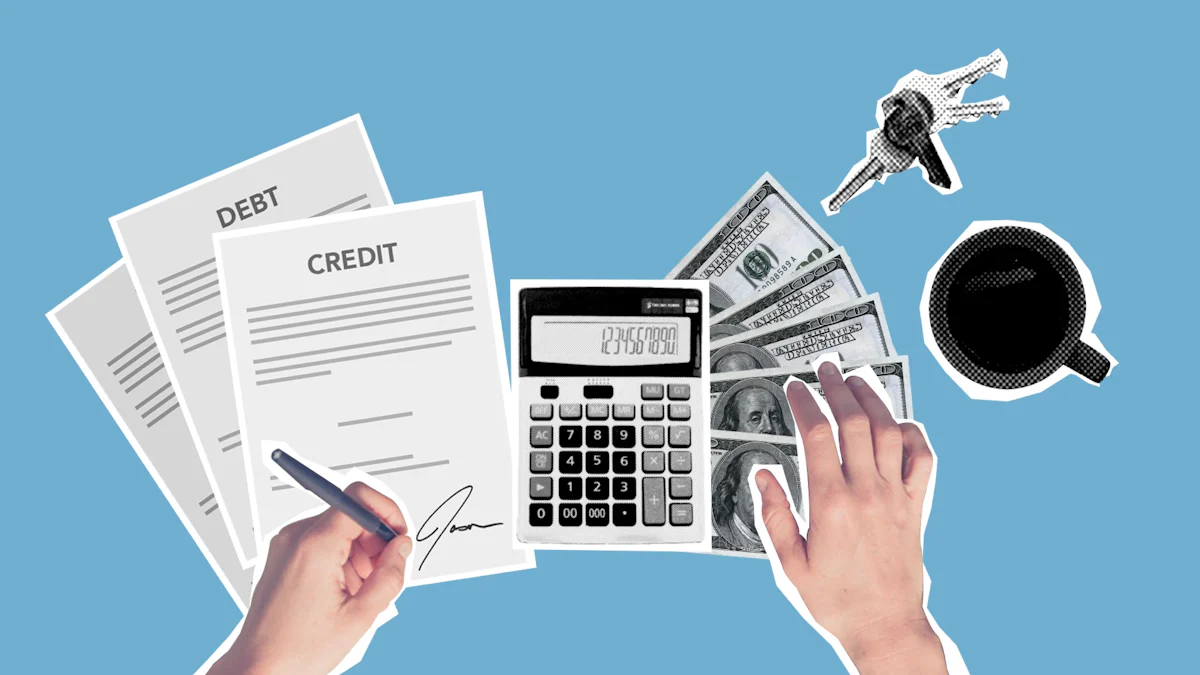Top Strategies for Making the Most of Your Balance Transfer Card

Top Strategies for Making the Most of Your Balance Transfer Card
Image Source: pexels
Have you ever felt like your credit card debt is spiraling out of control? I’ve been there, and trust me, it’s overwhelming. That’s where balance transfer cards can make a huge difference. They’re a smart way to save money and tackle debt faster. Nearly two-thirds of people who use these cards pay off their balances during the promotional period. That’s a game-changer, right? By taking advantage of 0% APR balance transfer credit cards comparison, you can focus on paying down what you owe without worrying about interest piling up. The key is planning. With a clear repayment strategy, you’ll feel more in control of your finances and closer to being debt-free.
Key Takeaways
-
Balance transfer cards let you move debt to 0% APR cards. This helps you pay off debt faster and save money.
-
Check all details for fees and costs of transfers. Knowing these helps you avoid surprises and make better choices.
- Make a plan to pay off your debt on time. Finish before the promo ends to avoid high interest rates.
Understanding Balance Transfer Cards

Image Source: unsplash
What Are Balance Transfer Cards and How Do They Work?
Balance transfer cards are like a lifeline when you’re drowning in high-interest debt. They’re designed to help you manage that debt by letting you move your existing balances to a new card with a lower or even 0% introductory interest rate. Unlike traditional credit cards, which are mostly used for everyday purchases, balance transfer cards focus on debt consolidation. This means you can combine multiple debts into one payment, making it easier to manage your finances. I’ve found that this simplicity reduces the stress of juggling multiple due dates and interest rates.
Key Terms to Know: 0% APR, Balance Transfer Fee, and Promotional Period
If you’re new to balance transfer cards, some terms might seem confusing. Let me break them down:
-
0% APR : This is the star of the show. It means you won’t pay any interest on your transferred balance during the promotional period. This can save you a ton of money.
-
Balance Transfer Fee : Most cards charge a fee for transferring your balance. It’s usually between 3% and 5% of the amount you transfer. For example, if you transfer $5,000 and the fee is 3%, you’ll pay $150 upfront.
- Promotional Period : This is the time frame when the 0% APR applies. It typically lasts 12 to 18 months. After that, the regular interest rate kicks in, so it’s crucial to pay off your balance before this period ends.
Common Fees and Costs to Consider
While balance transfer cards can save you money, they’re not entirely free. Here are some costs to watch out for:
-
Balance Transfer Fees : As I mentioned earlier, these fees range from 2% to 5% of the transferred amount. In fact, 44% of offers in 2025 have fees of 4% or 5%, which is higher than in previous years.
-
Hidden Costs : Some cards might have additional fees, like annual fees or penalties for late payments. Always read the fine print to avoid surprises.
- Post-Promotional APR : Once the 0% APR period ends, the interest rate can jump significantly. Make sure you know what the regular APR will be.
By understanding these terms and costs, you can make smarter decisions. Comparing options through a 0% APR balance transfer credit cards comparison can help you find the best deal for your needs.
0% APR Balance Transfer Credit Cards Comparison
How to Choose the Right Card for Your Needs
Picking the right balance transfer card can feel overwhelming, but it doesn’t have to be. I always start by asking myself, “What’s most important for my situation?” For example, if I’m transferring a large balance, I focus on the fees. Some cards charge 3% to 5% of the amount I transfer, which can add up quickly. I also look at the regular APR after the promotional period ends. A low ongoing interest rate can save me money if I don’t pay off the balance in time.
Here are a few things I always keep in mind:
-
Check the fees for balance transfers.
-
Look at the interest rates, both during and after the 0% APR period.
-
Think about how opening a new card might affect your credit score.
- Calculate how much you’ll save by transferring your debt.
By focusing on these factors, I can narrow down my options and find a card that works for me.
Evaluating Balance Transfer Fees and APR After the Introductory Period
Balance transfer fees are one of the first things I check. They might seem small, but they can make a big difference. For instance, if I transfer $10,000 and the fee is 5%, I’ll pay $500 upfront. That’s why I always compare cards to see which one offers the best deal.
The APR after the promotional period is just as important. Once the 0% APR ends, the interest rate can jump significantly. If I still have a balance, I could end up paying more in interest than I saved. To avoid this, I make sure I know the regular APR before applying for a card. It’s all about planning ahead.
Comparing Promotional Period Durations and Benefits
The length of the promotional period is a game-changer. Some cards offer 12 months, while others go up to 18 or even 21 months. The Wells Fargo Reflect® Card, for example, gives you a 0% introductory APR for 21 months. That’s one of the longest periods available right now.
When I compare cards, I think about how much time I’ll need to pay off my balance. A longer promotional period gives me more breathing room, but I still try to pay off the debt as quickly as possible. It’s not just about the time—it’s about using that time wisely.
Strategies for Maximizing Benefits

Image Source: pexels
Create a Repayment Plan to Eliminate Debt
When I first got a balance transfer card, I realized that having a solid repayment plan was non-negotiable. Here’s how I approached it:
-
I calculated my total debt to understand the full picture.
-
Then, I created a budget by listing my income and essential expenses.
-
I chose a card with a long 0% APR period to give myself enough time to pay it off.
-
During the promotional period, I paid more than the minimum each month to chip away at the balance faster.
- To boost my repayment power, I even picked up a side gig and cut back on non-essential spending.
This step-by-step approach helped me stay on track and avoid feeling overwhelmed.
Pay Off the Balance Before the 0% APR Period Ends
I can’t stress this enough—paying off your balance before the 0% APR period ends is crucial. Nearly two-thirds of people manage to do this, but those who don’t often face steep interest rates afterward. I set a clear deadline for myself and broke my total debt into manageable monthly payments. This way, I knew exactly how much I needed to pay each month to avoid surprises.
Avoid New Purchases to Stay Focused on Debt Repayment
It’s tempting to use your balance transfer card for new purchases, but I learned the hard way that this can derail your progress. Adding new charges increases your balance and makes it harder to pay off the transferred debt. I made a rule for myself: no new purchases until the balance was gone. It kept me focused and helped me reach my goal faster.
Consolidate High-Interest Debt for Greater Savings
One of the biggest perks of balance transfer cards is consolidating high-interest debt. For example, paying off a $5,000 balance at a 25.99% APR would cost over $7,000 in three years. But with a card offering 0% APR for 18 months, I could save nearly $2,000. Plus, having just one monthly payment made budgeting so much easier. It also gave me peace of mind knowing I wasn’t juggling multiple due dates.
Monitor Your Credit Score and Financial Progress Regularly
Throughout the process, I kept an eye on my credit score. Paying down debt and making on-time payments improved my score over time. I also tracked my progress monthly to stay motivated. Seeing the balance shrink gave me a sense of accomplishment and reminded me why I started this journey.
By following these strategies, I maximized the benefits of my balance transfer card and got closer to financial freedom. Tools like a 0% APR balance transfer credit cards comparison can help you find the right card to start your journey.
Common Mistakes to Avoid
Underestimating Balance Transfer Fees and Costs
When I first used a balance transfer card, I didn’t pay much attention to the fees. Big mistake! Those fees can add up quickly. For example, a 3% fee on a $5,000 transfer means $150 right off the bat. That’s money I could’ve used to pay down my debt. Always calculate the fee before transferring a balance. It’s easy to overlook, but it can make or break your savings plan.
Tip : Use a calculator to figure out if the savings from the 0% APR outweigh the transfer fee. If not, it might not be worth it.
Missing Payments and Losing the 0% APR Offer
I’ll admit, I’ve missed a payment or two in the past. With a balance transfer card, though, that’s a huge no-no. Missing even one payment can cancel your 0% APR offer. Suddenly, you’re stuck with a high-interest rate again. I set up automatic payments to avoid this. It’s a simple step that saves a lot of stress.
Failing to Pay Off the Balance Within the Promotional Period
I’ve learned the hard way that not paying off the balance before the promotional period ends can cost you. Once the 0% APR expires, the regular interest rate kicks in, and it’s often sky-high. I always create a repayment plan with clear monthly goals. This keeps me on track and ensures I’m debt-free before the deadline.
Accumulating New Debt While Paying Off the Old
It’s tempting to use your balance transfer card for new purchases, but that’s a slippery slope. I’ve been there, and it only made things worse. Adding new debt while trying to pay off old balances defeats the purpose. I made a rule for myself: no new charges until the transferred balance is gone. It’s tough, but it works.
Overlooking the Fine Print in Terms and Conditions
I used to skim through terms and conditions, but not anymore. Some cards have sneaky fees or rules that can catch you off guard. For instance, some cards charge interest retroactively if you don’t pay off the balance in time. Now, I read every detail before applying for a card. It’s not the most exciting task, but it’s worth it.
Note : Always double-check the terms for hidden fees or penalties. A little extra effort upfront can save you a lot of headaches later.
Picking the best balance transfer card helps manage debt better. I focus on knowing the rules, costs, and payment plans. A good plan helps me pay off the balance before interest starts. Staying focused has saved me money and improved my finances.
Tip : Look at different cards and follow your plan. These cards work great if used smartly!
FAQ
What happens if I don’t pay off my balance during the promotional period?
If you don’t pay it off, the regular APR kicks in. You’ll start accruing interest on the remaining balance, which can get expensive.
Tip : Set monthly payment goals to avoid surprises when the 0% APR ends.
Can I transfer balances from multiple cards to one balance transfer card?
Yes, most cards allow multiple transfers. However, the total amount can’t exceed your credit limit. Check your card’s terms to confirm.
Note : Consolidating multiple debts simplifies payments but watch out for transfer fees.
Will opening a balance transfer card hurt my credit score?
It might cause a small dip initially due to the hard inquiry. Over time, paying down debt can improve your score if you manage it responsibly.
Emoji Reminder : 📊 Keep an eye on your credit report to track progress!